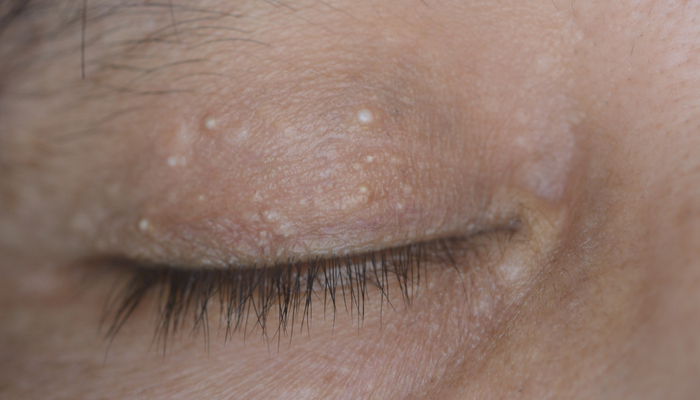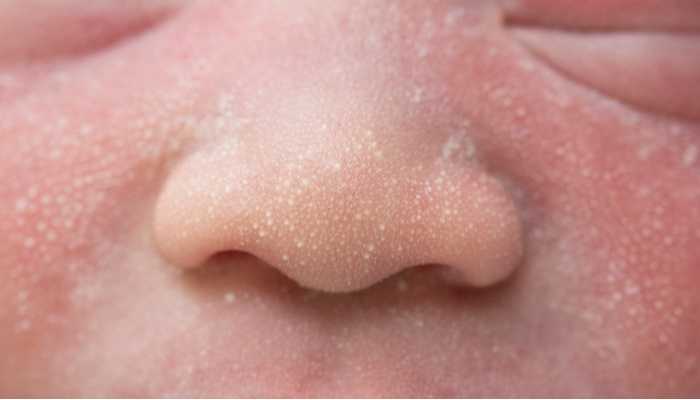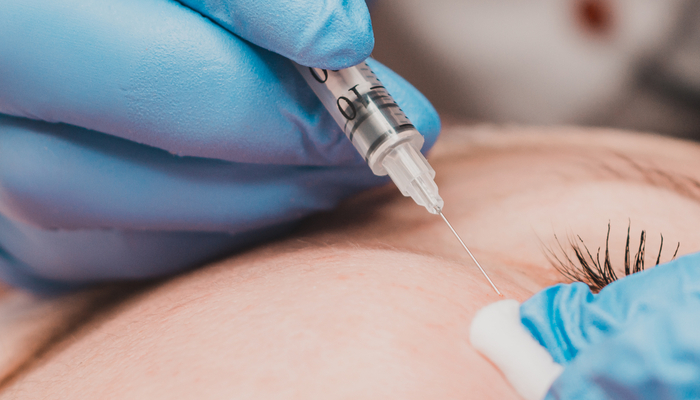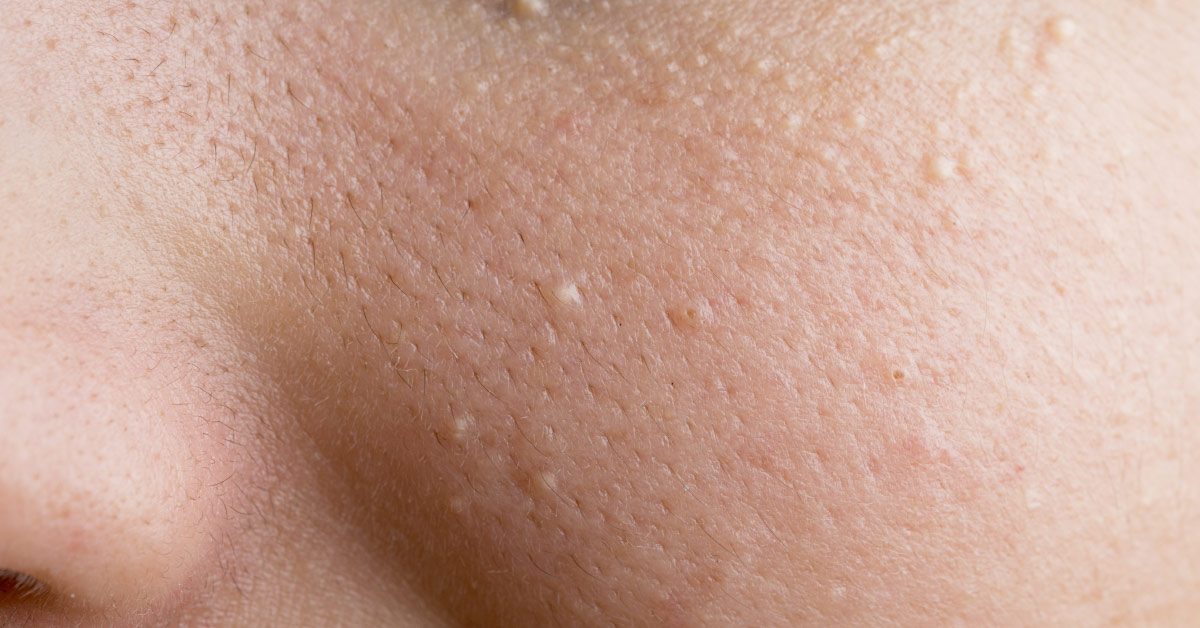Have you ever noticed little white bumps that almost look like teeny, tiny pimples on a newborn baby’s skin? Or perhaps even yourself, as an adult, have them from time to time. No, those little white “pimples” are not acne – they’re milia. This is everything you need to know.
What Are Milia?
Milia are tiny white bumps that you might see on a newborn baby’s cheeks, chin, or nose. It is quite common and isn’t actually preventable, but it is also not permanent or dangerous. Usually, they disappear in a few weeks or months. They are white but sometimes slightly yellow, however, they aren’t usually itchy or painful. Sometimes certain types of fabrics can rub on them which then can cause them to become red and irritated. (1, 2)

What Causes it?
Milia can occur, however, on the skin of people of all ages. It is caused when tiny skin flakes become trapped in small pockets under the surface of the skin. The actual cause of it in newborns is unknown. In older children and adults, however, there are a number of reasons:
- blistering due to a skin condition, such as epidermolysis bullosa (EB), cicatricial pemphigoid, or porphyria cutanea tarda (PCT)
- blistering injuries, such as poison ivy
- burns
- long-term sun damage
- long-term use of steroid creams
- skin resurfacing procedures, such as dermabrasion or laser resurfacing
- As a result of aging as the skin loses its ability to self-exfoliate
Read More: If You See These Painful Red Bumps, You May Have Dyshidrotic Eczema
Types of Milia
There are a variety of different types of milia. Neonatal milia is the one seen on newborn infants. Doctors say it occurs in about 40% of newborn babies. Primary milia can be seen in older children and adults. You’ll see it on the eyelids, forehead, and genitalia. It will last usually for a few weeks to a few months.

There are some rare genetic disorders that can lead to something called juvenile milia. People with juvenile milia should have their genetic conditions closely monitored as these can lead to more serious illnesses. In this case, the milium is a symptom of another condition.
Milia en plaque is associated with specific autoimmune disorders, while traumatic milia is caused by an injury to the skin, such as a burn or rash. Finally, there are certain drugs and skin products that can also lead to the development of milia. For those with milia-prone skin, they should avoid the following ingredients in their skincare products:
- liquid paraffin
- liquid petroleum
- paraffin oil
- paraffinum liquidum
- petrolatum liquid
- petroleum oil
How To Get Rid of Milia

As already mentioned, milia do usually go away on their own. That being said, if you want to help speed along the process, there are available treatments. Cryotherapy is the most common and uses liquid nitrogen to freeze away the milia. Diathermy is the opposite, using extreme heat. You can have deroofing done, which is when a qualified professional uses a sterile needle to pick out the contents of the cyst. (3)
Topical retinoids, chemical peels, and laser ablation can also be highly effective. Finally, you can do destruction curettage which is the process of surgically scraping and cauterizing the cysts. Again, all of this should be done by qualified professionals. Before you jump to try any treatment, you should first talk to your doctor or a dermatologist.
If you or your newborn have milia, don’t panic. Wait a couple of weeks to see if it resolves itself. Whatever you do, never try to pop milia. If it doesn’t go away on its own, go see your doctor to make sure it isn’t a signal for a different, underlying problem. Always remember that it is better to be gentle with your skin than to use harsh exfoliants or a variety of different products. That will likely only make the problem worse.
Read More: Woman Left With Orange Skin After Giving Herself A Turmeric Facial
Sources
- “Milia.” Mayo Clinic
- “Milium Cysts in Adults and Babies.” Healthline. Cynthia Cobb, DNP, APRN, WHNP-BC, FAANP. June 1, 2018.
- “The Best Ways to Treat and Prevent Milia.” Very Well Health. Angela Palmer. December 9, 2021.
Disclaimer: This information is not intended to be a substitute for professional medical advice, diagnosis or treatment and is for information only. Always seek the advice of your physician or another qualified health provider with any questions about your medical condition and/or current medication. Do not disregard professional medical advice or delay seeking advice or treatment because of something you have read here.

